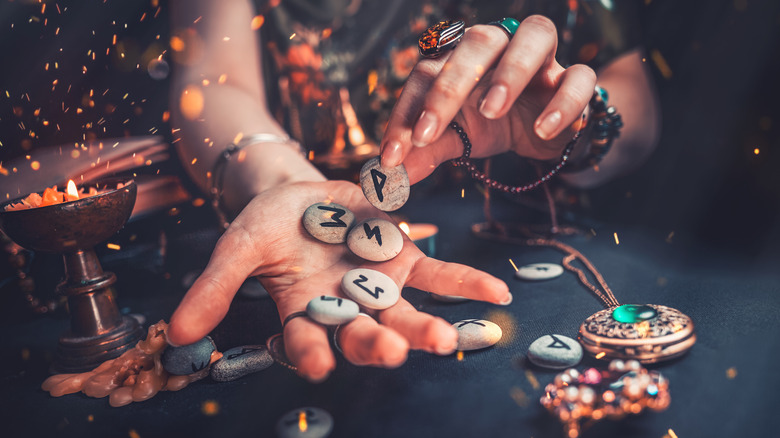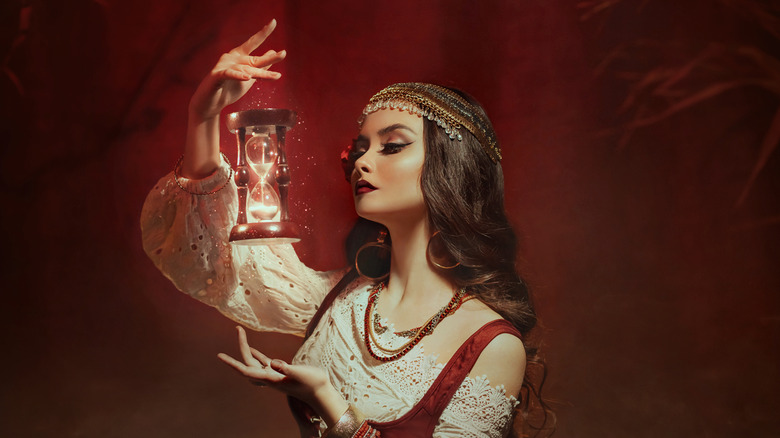The Truth About Medieval Witches
For centuries, the image of a witch has haunted and fascinated us, represented by wicked old women living alone in cottages deep in the woods, or powerful, evil women conjuring any number of spells to terrify men, women, and children. In medieval times, those who practiced witchcraft were a lot more than just that, though. According to Medieval Chronicles, witchcraft — defined as believing in or practicing magic — had a healing component, and anyone engaging in pre-Christian religious practices, or that simply worshipped nature could be accused of being a witch. It was even believed that witches had demons under their command.
In truth, witches were likely nothing more than women practicing their pagan tradition of healing through the power of nature. As the Christian religion spread, however, so, too, did anxiety about the practice of witchcraft and sorcery, and laws were passed at the time to prohibit witchcraft and prosecute witches. That's when the threat of witchcraft took hold in the darkest corners of the popular imagination, and witch-hunts began. According to History, witch panic really took off in the 1400s, and the most common ways we picture the persecution of witches — witch trials, witch-hunts, and burnings at the stake, among other horrors — came into practice.
80,000 suspected witches were killed in Europe
Between the years 1500 to 1660, 80,000 accused witches were put to death throughout Europe, History reported. Contributing to the furor was a book called "Malleus Maleficarum," published in the late 15th century. The title of the book translates roughly to "The Hammer of Witches." A bestseller in its day, the book was like a guide to witch-hunting. For more than a century, only the Bible sold more copies than "Malleus Maleficarum," and the book became its own bible of sorts for zealots seeking to vanquish witches they perceived to be in their midst.
In the U.S., perhaps the most notorious period of witch-induced hysteria, however, came in the late 17th century, in Salem, Massachusetts, sparked when two young women began to experience what were seen as fits and contortions with supernatural underpinnings (but now are thought to be attributable to poisonous fungus, per History). By the time all was said and done, 150 people were accused of witchcraft and 18 were killed in Salem. Witch-hunt mania spread throughout the 13 colonies, finally subsiding when a satirical article published in the Pennsylvania Gazette and attributed to Benjamin Franklin helped lay the whole thing to rest around 1730.
Today, witch-hunts and witch trials seem like relics of a distant and more barbaric past. However, according to History, in parts of the international community witch-hunts and witch trials are a far more modern phenomenon than many might otherwise believe.

